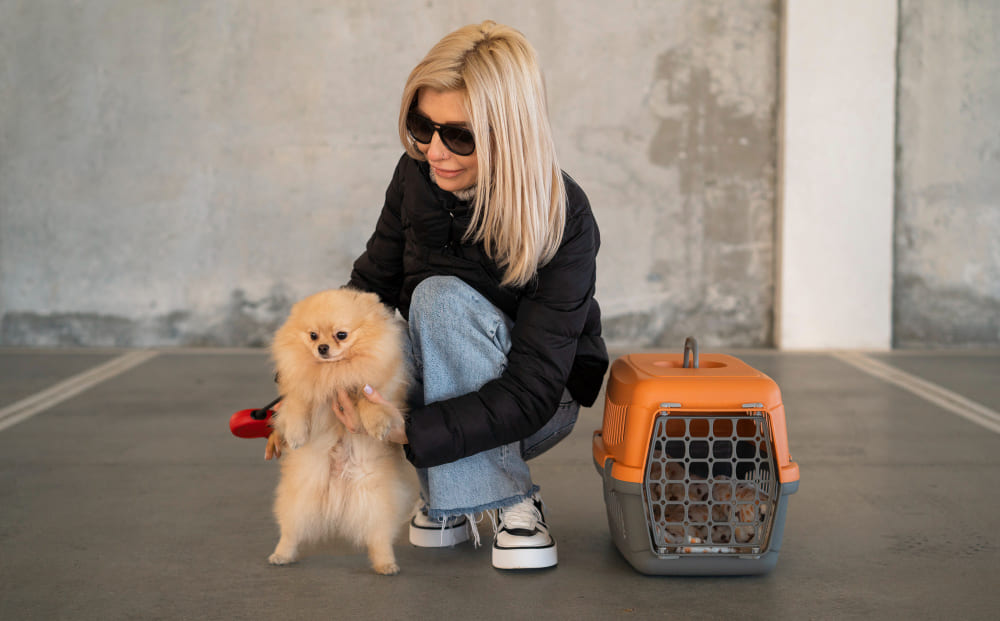
Pet fashion is no longer a niche trend reserved for a few extravagant owners—it has grown into a global phenomenon that blends practicality, creativity, and style. From functional gear that keeps pets safe and comfortable to runway-worthy outfits designed for sheer glamour, pet fashion reflects how deeply we consider our furry friends as family members. But how did it all begin, and why is it so popular today? Let’s explore the fascinating world of pet fashion.
The Origins of Pet Fashion
The history of dressing pets dates back centuries. Ancient Egyptians adorned cats with jewelry as a sign of reverence, while royal courts in Europe often dressed their lapdogs in embellished collars and cloaks to match their aristocratic owners. In some cultures, clothing pets was more than a luxury—it symbolized status, wealth, and affection. Fast-forward to the modern age, and pet fashion has evolved from being a symbol of status to becoming a form of self-expression and practicality.
Practical Gear: Function Before Fashion
While it’s easy to associate pet fashion with glittery outfits, its roots often lie in function. For instance:
- Weather Protection: Dogs with short coats or sensitive skin often benefit from sweaters or jackets during cold winters, while raincoats and waterproof boots shield them from harsh conditions.
- Safety Gear: Reflective vests and harnesses ensure pets are visible during nighttime walks, reducing the risk of accidents.
- Medical Needs: Some outfits serve therapeutic purposes, such as calming shirts for anxiety or protective suits for pets recovering from surgery.
Practical pet fashion shows that clothing isn’t just about aesthetics—it can enhance pets’ quality of life while ensuring their safety and well-being.
The Rise of Stylish Outfits
Alongside practical wear, the fashion-forward movement for pets has exploded. Social media platforms like Instagram and TikTok have played a significant role in popularizing stylish pet outfits. From birthday party dresses to themed Halloween costumes, the creativity knows no bounds. Popular pet influencers often flaunt wardrobes that rival those of humans, sparking trends and inspiring other pet parents to experiment with styles.
The variety is endless: casual hoodies, elegant tuxedos, sparkling gowns, and even matching “twinning” outfits that allow pets and owners to coordinate their looks. This cultural shift reflects how pets have moved from the backyard to the living room, and now, to the spotlight of fashion culture.
Pet Fashion as Self-Expression
Dressing up pets is not just about the pet—it’s also about the owner. Just like humans use fashion to express identity, pet parents use pet clothing as a reflection of their lifestyle, humor, or creativity. A sporty owner might prefer athletic gear for their dog, while someone who loves luxury may opt for high-end designer outfits. Pet fashion becomes an extension of personal style and a playful way to bond with pets.
The Pet Fashion Industry Boom
With the rising demand for pet clothing, the pet fashion industry has become a multi-billion-dollar market. Luxury brands like Gucci and Louis Vuitton have introduced pet collections, while countless independent designers now specialize in handmade pet clothing. E-commerce platforms are filled with pet outfits catering to every occasion, budget, and personality. Some even argue that the pet fashion world is catching up with human fashion in both creativity and innovation.
Controversies and Considerations
Despite its popularity, pet fashion is not without criticism. Animal welfare advocates often warn against prioritizing aesthetics over comfort. Ill-fitting or restrictive clothing can cause discomfort, anxiety, or even health issues. It’s essential for owners to ensure that any clothing serves the pet’s well-being first and foremost. A stylish jacket may look adorable, but if it restricts movement or causes overheating, it does more harm than good.
Ethical concerns also arise regarding the sustainability of fast fashion in the pet industry. With increasing awareness, eco-friendly and cruelty-free pet clothing brands are emerging, using organic fabrics and ethical production practices.
The Future of Pet Fashion
As pets become more integrated into our families, the trend of dressing them up shows no signs of slowing down. Advances in technology may soon bring innovations like smart clothing for pets, complete with GPS trackers, temperature control, or health monitoring. Meanwhile, designers are pushing the boundaries with sustainable fabrics and inclusive designs for pets of all shapes and sizes.
Conclusion
Pet fashion is far more than a passing trend. It’s a cultural movement rooted in love, creativity, and the evolving role of pets in society. From practical gear that ensures safety to stylish outfits that turn pets into social media stars, the world of pet fashion continues to expand and surprise. As long as comfort and welfare remain the priority, dressing up our furry companions can be a joyful way to celebrate the bond we share with them.






Kommentare (5)
Kommentierenvor 5 Stunden
Typisch
für Politiker, Verantwortung auf die Eltern abschieben
vor 7 Stunden
14-15 Jährige
können bis 1h früh in Raucherlokalen( über 90% der Gaststätte sind nicht rauchfrei) ihre ersten Zigaretten ausprobieren, kontrollieren wird das sicher niemand.
vor 6 Stunden
Die
können das auch in der Schule am oder abseits des Pausenhofs machen. Dazu braucht es sicher keine verlängerte Fortgehzeit.
vor 8 Stunden
„Was macht ein 14-Jähriger um 22 Uhr am Jakominiplatz?“
Er kann auf die Bim warten nach dem Kino. Und es geht eigentlich auch niemanden was, was ein Jugendlicher um die Zeit x am Ort y macht, wenn er gegen kein Gesetz verstößt.
vor 9 Stunden
Augehzeiten - Verantwortlichkeit der Eltern
Im Grunde bilden die im Gesetz niedergeschriebenen Ausgehzeiten einen Maximalrahmen, den die Eltern individuell kürzer ansetzen können (was oft sicher nicht schaden würde). Leider haben viele Eltern bei den Jugendlichen "nichts zu melden" - und bevor viel diskutiert wird wirds geduldet.
Traurig nur, wenn sich Eltern beschweren kommen, wie zB. bei einer Ballveranstaltung in Kärnten, weil eine 14-Jährige ohne Aufsichtsperson nicht eingelassen wird. Laut Gesetz wäre es ja erlaubt. Hoffentlich wird dann auch alles klarer ausformuliert, damit viele Diskussionen ausbleiben (Aufsichtsperson usw.).